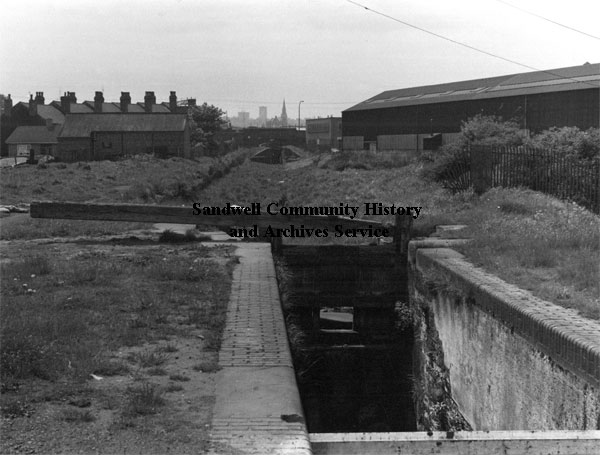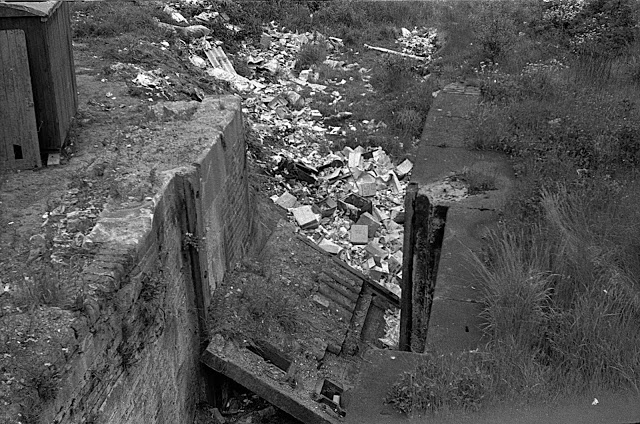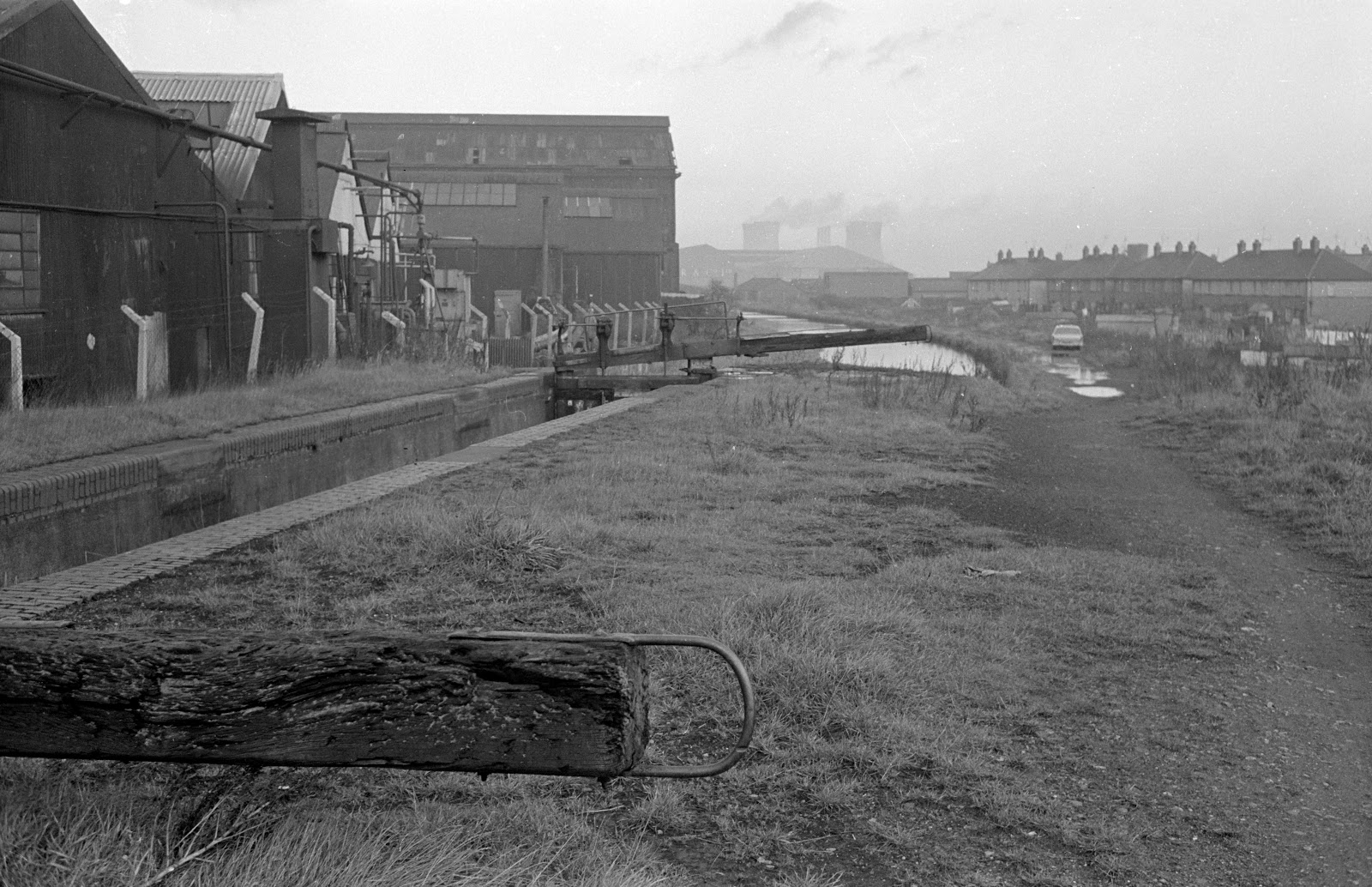Locks Four to Eight
My search for obscure waterways draws me back to the Tipton area time and time again.
This is not because the area has any particular scenic beauty, far from it. In fact, much of it can best described as a post industrial wasteland, but nowhere else in the UK contains so many canals in such a small area. Of course, many of these waterways were abandoned in the middle of the last century, but the desolate nature of the area means that, with a bit of poking around, telltale remains are still visible on the ground.
The Toll End Communication Canal is a waterway with a confusing history, a hybrid never really knowing what it was. Soon after Brindley completed what we now refer to as the Old Main Line, a short 1/4 mile branch was dug to the east of Tipton Green in 1805, dropping down through three locks, known as the Tipton Green Branch. This initially terminated somewhere near the line of today's New Main Line at Watery Lane Junction. There is not a lot to see of this canal today, save the chamber of the middle lock which has been incorporated into a path.
The following year the Tipton Green Branch was extended for a further mile, descending through four more locks and following the line of what is now an open land drain to the side of Tipton Cemetry.
Starting at the other end, a side arm of the Broadwaters Canal (now the Walsall Canal) was built in 1801, rising up through two locks to reach a new coal mine. Eight years later, in 1809, the Toll End Branch was extended westwards, linking into the mid point of the Tipton Green Branch, with the addition of two more locks. There is little to see of the Toll End section today, apart from a raised water pipe spanning an infilled entrance, and a bricked up archway under Toll End Road.
Further west the canal path can be detected passing under Bridge Road before it is completely lost under industrial wasteland, but continued on up the hill next to Tipton Cemetry, kinking round to the right to join the mid point of the older Tipton Green Branch. The line of this sharp twist is still visible from the air in the form of a stand of trees and the line has been studiously avoided by subsequent development projects.
The area between the eastern end of the old Tipton Green Branch and the western end of the Toll End Branch became home to the Horsley Ironworks until 1865, which supplied many of the fine canal bridges we see in the area today.The recent construction of a new road to replace the old railway level crossing has revealed an archway in the embankment behind Caggy's yard, which was probably the canal bridge. Sadly, the construction team were not enthusiastic about my request for a hands on investigation, hence no photo!
The construction of the New Main Line in 1829 cut through the Tipton Green Branch creating Watery Lane Junction, which is now the site of Caggy's Boatyard.
So, this short 1 3/4 mile canal with its 9 locks was built in four stages over eight years to service the local mines and industry, until it was abandoned in 1966 and filled in in the 1970's. For ease of reference the locks re numbered one to ten including the Tipton Green and Toll End Communication Canals combined running top to bottom.
Given the number of archive photos we have discovered the total line has been divided into three:
2. TECC - Watery Lane to Lock Eight, junction with the Toll End Branch (this post)

Toll End Junction 1975 (Hugh Potter)
Toll End Stub 1975 (Hugh Potter)
Tipton Green (left) and Toll End (right) - there The New Main Line crosses
Toll End Lock Four
Alan Smith image from around 1961 of Lock 4 and BCN Cottage to right (now Caggys Yard)

Lock Four

Lock Four (site of)

1973


Lock Four

Lock Four (site of)

1973

Toll End Junction 1975 looking back to Tipton (Hugh Potter)
Toll End Lock Five and Workhouse Lane Bridge (formerly Moat Bridge)
Toll End Lock Five beneath Workhouse Lane (Moat) Bridge 1975 (Hugh Potter)
Workhouse Bridge and Lock Five 1966 - Ian Husslebee

Note the "Bridgeguard" reinforcement underneath Workhouse Lane Bridge

Note the "Bridgeguard" reinforcement underneath Workhouse Lane Bridge
Toll End Lock Five 1975 (Hugh Potter)
Below Toll End Lock Five (Hugh Potter)
Toll End Locks Five and Six by Alan Price 1969
Line of Toll End Communication Canal between locks five and six in 1975 (Hugh Potter)
Lock Six looking downstream

Toll End Locks six and five with Workhouse Lane Bridge beyond
Lock Six looking downstream

Toll End Locks six and five with Workhouse Lane Bridge beyond
Lock Seven on the twist onto the older Toll End Branch below by Alan Price 1969
Click here to move to the lower half of the Toll End Communication Canal
Click here to return to the Tipton Area index page
The above photos have been assembled from various sources, including those freely found on the internet. My thanks go to the many photographers alive and dead who have contributed to this collection and in so doing, are keeping the memory of these lost canals alive. These images are reproduced for ease of research are are not necessarily the property of this blog, and as such should not be used for commercial gain without the explicit permission of the owner (whoever that may be).



























































No comments:
Post a Comment